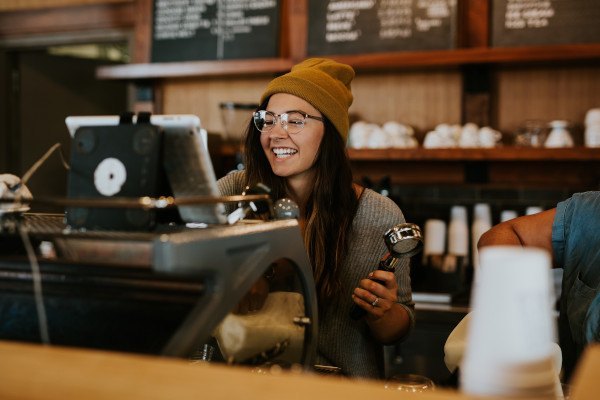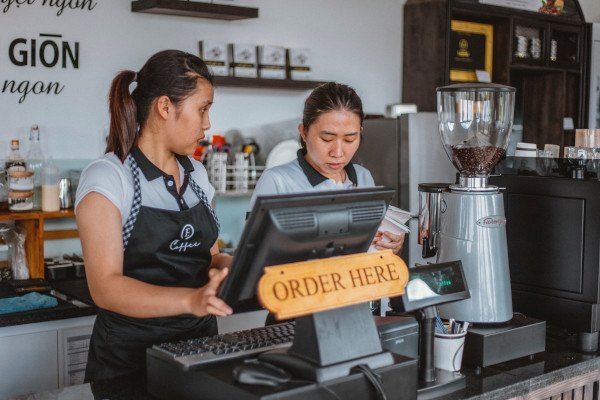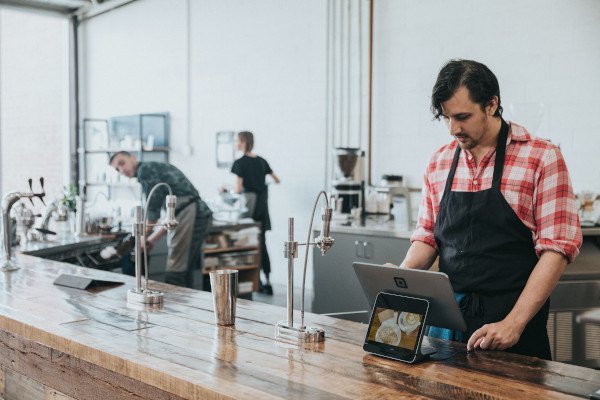Coffee Shop Trends You Need To Know In 2023
As the coffee shop industry continues to grow and evolve, both business owners and coffee enthusiasts need to stay up-to-date on the latest trends and developments. In 2023, the coffee shop industry will witness several key trends that will mold how we enjoy and experience coffee. From the latest brewing methods to state-of-the-art technology and rising sustainability initiatives, these trends will significantly impact the industry.
This article will explore some of the most important coffee shop industry trends to watch for in 2023. Whether you’re a coffee shop owner or simply a coffee lover, these trends will pique your interest and change how you think about your daily cup of joe.
Post-Pandemic Recovery

Following the hurdles brought about by the COVID-19 pandemic, 2022 has shown promising strides as cafes have started to bounce back and find their footing. Why wouldn’t it? Coffee consumption is a daily ritual for more than 60% of Americans. By adjusting prices, trying new service styles and models, getting into online ordering, and embracing innovative tech to run the business, we have seen the rise of tens of thousands of cafes across the globe.
By being up-to-date with the latest trends in the coffee shop business, you will understand how to overcome challenges better and run the business more effectively this year. But first,
Let’s look at the coffee shop market, shall we?

Overall, the coffee shop and cafe industry is steadily recovering. Coffee chain sales in the US alone grew almost very close to reaching pre-pandemic sales, soaring 10% from June 2021 to June 2022. Today, there are more than 2.8% more branded coffee shops in the US than there were during the pre-pandemic times. What a way to bounce back from a crisis!
Of course, we expect the industry’s big boys like Starbucks and Dunkin Donuts to still hold a large market share in the global coffee market. Still, independent cafes continue to open and become cornerstones of their local communities.
The popularity of small independent coffee shops are seen to be most prevalent among Millennials and Gen Z, making this generation the age group that has helped keep many small businesses afloat. It's reported that over one-third of people aged 18-29 recently visited a coffee shop. Most people beyond this age bracket are much more likely to drink a cup of coffee from a drip maker at home, while younger people tend to try different coffee brewing methods.
The average American coffee consumption rate is 1.87 cups of coffee a day. Though the most common location for coffee drinking is at home and the office, cafes and local coffee shops— play a massive role in keeping everyone caffeinated.
Coffee consumption varies by age. Nearly half of the people between the ages of 18-24 drink coffee, and almost 70% of seniors do, too — and they drink more of it.
Coffee Shop Trend You Need To Know In 2023
Pre-ordering (and online ordering) is still popular

Pre-ordering has become increasingly popular in the coffee shop industry in recent years. Although it was once only utilized by corporate chains and big coffee shops in bustling downtown areas, this practice has now spread to independent coffee shops worldwide.
The COVID-19 pandemic played a major role in accelerating the adoption of online ordering technology as customers looked for ways to minimize contact and reduce wait times. Responding to this, independent cafes began offering online ordering options to provide customers with a more seamless experience. This trend has been met with widespread enthusiasm. Customers have come to appreciate the convenience of ordering and paying for coffee drinks and pastries on their mobile devices before arriving at the cafe. Whether it’s for safety or convenience, pre-ordering is now a popular option for coffee lovers everywhere.
COVID or not — online ordering has taken hold and is here to stay in 2023.
The labor shortage and the staffing crisis persist

Coffee shops and cafes aren’t exceptions to the staffing shortages and high labor costs experienced by the hospitality industry. The pandemic has caused thousands of cafe and hospitality workers to leave the industry, and many are unwilling to return to low-paying jobs with little to no benefits. Coffee shops have had to explore better compensation packages to attract and retain talent. This often leads to higher labor costs.
While higher labor costs may seem daunting, investing in happy, well-paid employees can lead to lower turnover and better levels of institutional knowledge. Offering competitive compensation and a supportive work environment can also help cafes attract top talent.
Many cafes needed to raise their prices to cover the increased costs, even as inventory costs rose due to inflation. However, it’s essential to communicate the reasons for the price increase to your customers. Gradual price increases while considering the market and competition, coupled with loyalty programs and other value offerings, can help customers adjust to the new pricing structure. Optimizing menu design and streamlining operations can also help reduce labor costs in the long run.
Price increases are inevitable

Inflation has had a significant impact on the hospitality industry, with rising costs of materials like disposable cups, eggs, and milk leading to increased menu prices in coffee shops and restaurants across the globe.
Coffee remains a huge markup product. A price increase of just 10% can significantly impact profitability. For cafes, taking a data-driven pricing approach can help maximize profitability without alienating customers.
By analyzing sales data and menu offerings, cafes can determine the most profitable items and adjust prices accordingly. This ensures that every item on the menu is priced to maximize profitability while remaining competitive in the market.
Overall, while increasing menu prices may be a difficult decision for businesses, it is often necessary to remain financially solvent during these times of economic uncertainty. By taking a data-driven approach to pricing, cafes can ensure they maximize profitability while offering customers competitive prices.
Plant-based alternatives are everywhere

While cow's milk is still a popular choice, non-dairy alternatives like oat, soy, and almond milk have gained significant popularity in recent years. There are various reasons for this shift towards plant-based milk. It can range from lactose intolerance and dietary restrictions to veganism, an increased health-conscious population, and personal taste preferences.
Almond milk has traditionally been the top-selling non-dairy milk, but sales have slightly decreased in the past year. In contrast, oat milk has experienced a surge in popularity, with refrigerated oat milk sales growing by 55-58% in the past year alone.
Major coffee chains like Starbucks have taken notice of this trend and introduced popular beverages like the Shaken Oat Milk Latte to cater to customers’ preferences. Independent cafes have also followed suit, offering various non-dairy milk options in their drinks.
The rise of non-dairy milk alternatives shows no signs of slowing down, as consumers continue to seek plant-based options for health, environmental, and ethical reasons. Because of this, businesses need to keep up with this trend and offer a range of non-dairy milk options to meet the evolving demands of their customers.
Customers are tipping more

Supporting local businesses and employees was a popular priority, especially in the early days of COVID. Still, some reports say that people are getting tired of paying big tips every time they go out to eat. The media peg this phenomenon as, “tip fatigue.”
But current data shows that tip fatigue is a myth. Across the United States alone, the average tip for full-service restaurants is 19.6%, while it’s 16.9% for quick-service restaurants like cafes. Although the tipping percentage is typically lower for takeout orders, the fact that customers are still tipping demonstrates their commitment to supporting local businesses.
Despite the challenging economic climate, people are still showing generosity and tipping generously to help service workers earn a decent income. With the cost of living higher than ever before, many customers are willing to increase their tips, knowing that it can help keep workers safe, fed, and housed. Customers play a significant role in supporting their favorite local businesses and the employees who make them thrive by tipping a little extra.
Consumer trends continue to favor iced beverages

Iced coffee continues to gain ground against hot coffee beverages: last year, Starbucks announced that their cold beverage sales were outpacing their hot coffee sales.
While plain old brewed coffee may still hold its place in the coffee industry, the truth is that coffee and tea trends constantly change, and the younger generation (aka Millennials and Gen Z) are all about it. They’re eager to taste-test any and every new fad that comes their way. So, the world of coffee and tea is always brewing with fresh and exciting flavors for the adventurous souls out there!
Here are some of the most popular coffee and tea trends in 2023:
- Mega-caffeinated and smooth in flavor, cold brew coffee is a drink young people can’t get enough of.
- Nitro cold brew is pushed through a canister with nitrous oxide. This yields a delicious cup of cold coffee topped with an ultra-smooth, frothy foam head.
- As used in Korean dalgona coffee and Greek frappés, instant coffee continues to be more popular and desirable than pre-pandemic. Coffee shops whip the instant coffee with sugar to create frothy, creamy, sweet iced or hot coffee beverages.
- Japanese matcha green tea is known for its grassy flavor, opaque bright green hue, and high caffeine content. It’s famous as is, in matcha lattes and iced matchas.
Cafes are investing in technology and automation

Cafes and restaurants are embracing the tech revolution with open arms! From coffee pre-ordering systems to Coffee shop POS that make life easier, it's clear that cutting-edge technology is the way forward.
Gone are the days of waiting in long queues to order your favorite brew. With innovative POS systems, you can facilitate sales so much more efficiently. And don’t even get us started on contactless payment terminals and QR codes that let customers order coffee and meals from the table right on their phone - talk about convenience!
But it's not just about making things easier for customers. The right technology can help cafes manage inventory, track costs, and streamline operations behind the scenes. From recipe costing to controllable cost management, these tools are a game-changer for businesses looking to stay ahead of the competition.
So if you’re a cafe owner still stuck in the dark ages, it’s time to embrace the future. With the right tech tools at your fingertips, you can take your business to the next level and provide an unforgettable experience for your customers.
-
 1
1



0 Comments
Recommended Comments
There are no comments to display.
Please sign in to comment
You will be able to leave a comment after signing in
Sign In Now